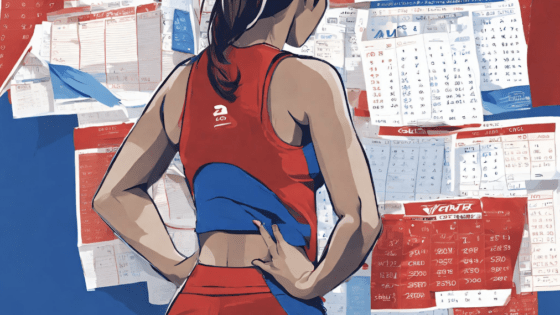 Our tenth year anniversary is a chance to reflect on some of the most important coaching choices we have made over the last decade. We are no strangers to controversy — what’s best for you might not be what’s popular — but our track record speaks for itself.
Our tenth year anniversary is a chance to reflect on some of the most important coaching choices we have made over the last decade. We are no strangers to controversy — what’s best for you might not be what’s popular — but our track record speaks for itself.
Just like you review your previous year before planning your next one, it’s valuable to see what we’ve done as a reminder of our true direction. It’s easy to be distracted by trends or individual feedback, but using recorded history to review our journey ensures that we’ll remain impartial.
We hope you enjoy this list, and if there’s anything we forgot please tell us on our Facebook page.
Access Our Insider Triathlete Email Series
Don’t Swim In the Winter
Every time we publish this strategy, we get hate mail and angry comments. The premise is simple…the amount of extra work required to significantly improve your swim, combined with fixed pool or Open Water Swim availability and pre/post swim logistical challenges makes swimming the most difficult discipline.
To add more swimming either equals more time in your existing sessions or adding another session into your week. It’s a hard premise not only because early morning winter masters sessions reduce your sleep, but because swimming is so technique oriented that like coke on race day, you can’t stop swimming before race day if you want to continue seeing your gains.
Now our members exit the OutSeason® with a two week transition period focused almost exclusively on swimming. This allows them to recover from the Bike / Run work of the OS and put their swim on the fast track by cramming a month of swimming into just two weeks.
Run Before You Bike
We don’t just want more running, we want more time spent running well. But much like swimming, your running form and technique breakdown over time. And they absolutely suffer when you are running off the bike. Rather than always having you brick run, we turned 90% of our Bike+Run workouts into Run + Bike sessions.
Now you get the double benefit of running frequency and running quality. Yes, there’s a slight compromise on the bike workouts, but through adaptation after a few weeks this isn’t even noticable. And starting your bike ride with a big of fatigue (like exiting the water on race day) is actually a game-changer in terms of pacing selection and nutrition execution.
Run Durability
Created in 2015, the Run Durability Program (RDP) ensures that our athletes are prepared to handle the demands of the final twelve weeks of training and race day. The biggest common issue our members face every year is dealing with overuse injuries. These are disproportionately skewed towards running (few age grouper swim enough to cause damage).
There were several options we could have chosen, but we ultimately settled on viewing the run training as a season-long exercise vs phase specific one. This means that by the time an Endurance Nation athlete starts the final twelve weeks of Race Preparation training, they already have six months of high frequency run training on their body as preparation.
The RDP also meant refining our training zones, and lead to the creation of the Total Run Pace zone. This is the pace that almost anyone can sustain for a long period of time (with good nutrition) and is typically close to the expected run pace time of the athlete’s upcoming event.
Volume Weekends & Training Camps
Given our relentless focus on protecting your training time, most Endurance Nation athletes don’t put in epic volume consistent with their final event. To make sure our folks are ready to race, we added two key peak weekends of training in the final Race Preparation phase.
Similar to our Race Camps, these weekends are an opportunity for our athletes to challenge themselves physically and mentally. There’s no hiding from how you feel in hours three, four or five of a long ride. And repeating that training session the next day keeps you insanely focused.
We didn’t anticipate the training effect of these weekends, but since they are so different than the rest of the “regular” weeks our athletes not only enjoy the challenge and variety, they also experience a nice fitness boost as well.
Training with Power
Coach Rich started using power long before it became popular in the triathlon community. As an early adopter, he was able to master some of the core concepts of training and racing with power. You’ll find his name in some of the leading books on the topic!
While the application of power to our race execution strategy has helped thousands race better, power has done more for Endurance Nation. Specifically we have applied that same lens of quality and focus to all of our training sessions. Our focus on Quality over Quantity keeps our training plans perfect for the busy athlete who isn’t willing to compromise on their gains just because they don’t have the same time to train as everyone else.
Choosing Intensity over Duration
One of the biggest issues we have with other coaching methodologies is the frequent changes in scheduling. I don’t know about you, but having to come up with a new schedule just to fit my training each week is a monumental task — there’s just too many pieces to life with my kids. Instead of adjust training weeks, we change phases which allows our members to carve out the right training time and eliminates frequent changes.
The biggest offense is constantly adjusting training time. A 70 minute run becomes, 80 minutes…then 90 and before you know it, you are running 120 minutes, and you are 18 weeks out from race day. While adding volume works, it’s the lazy way to make things better. Besides, it’s really only appropriate to consistently add volume when a race is approaching!
Prizing Execution Over Performance
It’s easy to get caught up in who is the fastest athlete…but having an athlete do an Ironman® in 10:30 isn’t great if they messed up and left a ton of time on the table due to poor pacing and nutrition.
Speed might be absolute, but performance is relative.
As our athletes create and share race plans, we can easily reconcile predicted to actual performance. The athletes who match these two markers, or are able to run to their potential, are held in high regard. Even a 15-hour Ironman® finisher can have a breakthrough day that rivals the elites — and our community has grown to include many such amazing athletes.
Annual Review & Update Cycle
Every year we survey our athletes and ask for feedback. We compare those results with the notes we have compiled across the season, and with our own personal racing and training performance.
It’s a massive undertaking, but it ensures that no two Endurance Nation training plans are the same from year to year. We are consistently adjusting individual workouts and even the weekly layout to make sure our members continue to improve. This means that as an athlete who become a team member in January 2017, you will be using a plan that has been refined more than ten years in a row. You won’t find a more effective or comprehensive training program anywhere else — no one else cares as much as Endurance Nation!
Eliminating the Early Season Marathon
Someone, somewhere, a long time ago, decided that to be ready for an Ironman® or 70.3® you had to do a marathon first. Likely they meant well, but in today’s hyper-competitive world, most beginners will sign for a marathon and an Ironman® in the same season. In some cases this is only separated by a month or so!
We started trying to put an end to this myth many years ago, much to the chagrin of athletes who “want” to do a marathon first. Since then, well over 1000 Endurance Nation members have done their first Ironman® having never run 26.2 before. And they were fine.
Most athletes underestimate the cost of building the long run over two hours. They ignore the part about having to taper…and no one thinks about being buried in a terrible pit of fatigue and sore quads.
Best case scenario is that this marathon only punches an eight week hole into your year. No way you can make that 8 weeks fit into a Race Prep program…but it’s easy to add that into the end of your season when your body is ready to recover. Your future self will thank us, we swear!
Creating the Endurance Nation OutSeason®
Finally, we can’t close out this list without recognizing the impact of our OutSeason® training program. Started in 2008 to serve our members who wanted more than just another winter of trying not to eat, the OutSeason® has grown to become the most important part of our year.
I don’t measure your proficiency in our sport by races done, I measure them by number of OutSeason’s completed.
Build Fast, then Far. It’s part of our mantra, and it comes to life in the OutSeason®. There’s only thing more exciting than watching people build incredible fitness each winter. And that’s watching the same folks head outside on the open road and crush their personal bests on every loop, segment and hill.
Don’t sell your future self short by coasting this winter. Remember, work works!
Are there any lessons we missed? Please let us know! If you’re excited about reaching your endurance potential despite the constraints of life and work, Become a Team Member.

![First Price Increase in a Decade [Sign Up by Jan 15 2024!]](https://www.endurancenation.us/wp-content/themes/osmosis/images/empty/grve-image-small-rect-horizontal.jpg)


Leave a Reply